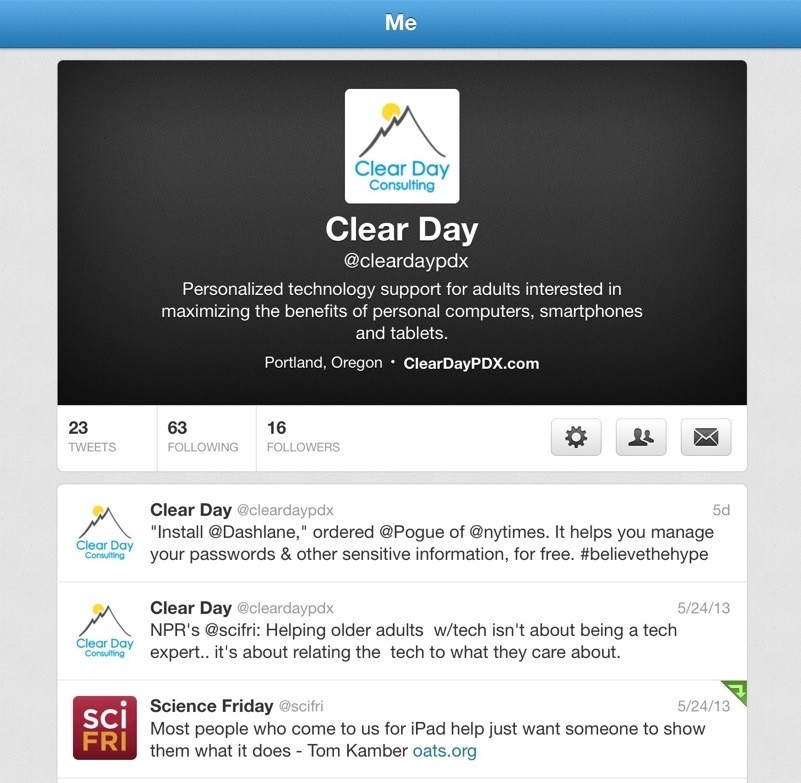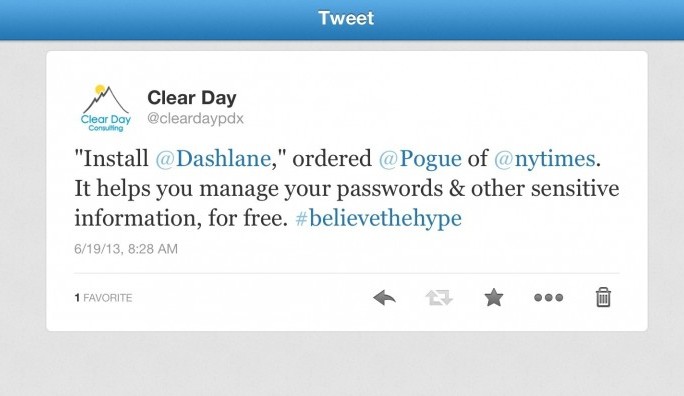Twitter is a popular social network that can be a great resource for finding and sharing thoughts and information. Get started by creating a profile. Next, find people and organizations of interest to follow. Likely, some of these users will follow you back. Then, it’s time to post a tweet. Easy, right? Don’t worry. We’ll provide a brief overview of the social network site, Twitter, and a few definitions and tips to make it easier to understand all those acronyms and abbreviations and prepare you to begin navigating the Twittersphere.

@Username
Like most social networks, each user has a unique username that tells folks who you are. This is generally some variation on your name or organization or perhaps something more descriptive and colorful (similar to setting up an email address). A username is preceded by the @ symbol when someone wants to mention the user in their post (known as a tweet). It is also useful when searching for other tweets that reference a particular user.
Tweet
Twitter is a microblog that limits your post length, so messages are intended to be brief. When you post a message, or tweet, it needs to be packaged into 140 characters or less. This limitation challenges you to be concise and makes it easy to scan and gather information from those you follow.

Follow
When you subscribe to another users tweets, this is known as following. You can follow friends and family. You can also follow organizations, celebrities, and even strangers with similar interests. Search for people by name or look for ideas for people/organizations to follow from other users.
NOTE: On Facebook, when you “friend” a person it’s reciprocal. Someone has to initiate the connection and the other has to accept. On Twitter your connections can be reciprocal, but they don’t need to be. Some may follow you back, some may not.
Home
Your home page will provide a feed, by the minute, of the latest tweets posted by the people and organizations you are following. If you are just getting started, you can carefully curate who you follow to help you get the latest information from these hand selected sources. More experienced tweeters may follow thousands of people and organize them by creating lists and selecting favorites.

#Hashtag
A hashtag is a word or phrase preceded by the # sign. It can be used as a label to help you categorize your tweet. It also helps when you are trying to find information on a particular subject. For example, if you were sending a message about a great new flavor at the ice cream shop down the street you may choose to use the hashtag #icecream. Now days, hashtags can be much more expressive: #whysettleforvanilla? A hashtag can be found anywhere in a post. If you’re tagging a phrase, just remember to eliminate the spaces between the words so the message stays intact.
Abbreviations and acronyms are useful within the content of the message when you are trying to get your point across in a limited amount of space. Many of the abbreviations/acronyms used when texting also show up in Twitter. To learn more check out Time Magazines article “92 Teen Text Terms Decoded for Confused Parents.” Just remember not to get carried away. Less is often more.
RT/Retweet
If you are interested in sharing a tweet that someone else has posted, you have the option of retweeting. This can be done on twitter by simply clicking on “retweet”. Or you can accomplish this by using RT at the front of the shared message.
DM/Direct-message
While Twitter is intended to be a fully public forum, there are still ways to communicate privately. One way is by sending a direct-message, which is only visible by you and the person you are sending the message.
Reply
If you would like to respond to something another user has posted, simply include @username (substituting their actual username) at the beginning of your tweet. Just remember the message will be visible to the public.
If you are interested in setting up a Twitter account and would like some guidance, please contact us today to help you navigate Twitter and other social media sites.


